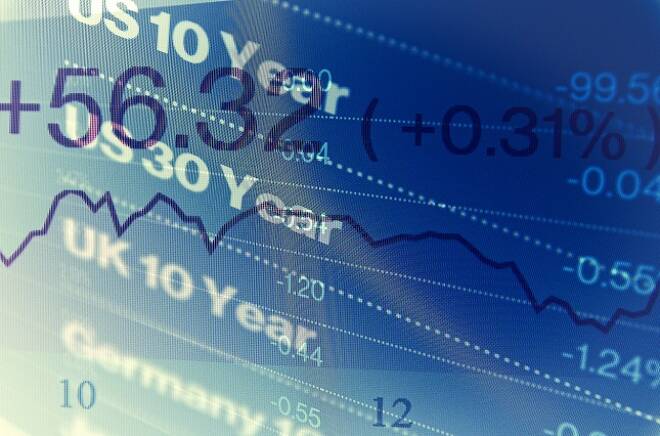Advertisement
Advertisement
Stocks Finish Week Higher, but Yield Curve Suggests Recession on the Horizon
By:
Although the performance in the U.S. equity markets suggests investors are not too concerned about escalating trade tensions between the United States and its major trading partners in China and the European Union, the price action in the Treasury markets indicates investors are being cautious and taking some protection against a possible economic downturn.
Volume was well-below average, but that didn’t stop U.S. stock market investors from driving the major indexes sharply higher during the holiday-shortened week. Perhaps the low volume was the reason behind the move since many suspect the absence of the major banks and funds may have allowed small traders to drive stocks higher. We’ll know early next week when the major players return to the game.
For the week in the cash market, the benchmark S&P 500 Index settled at 2759.22, up 1.5%. For the year, the index is up 3.2%. The blue chip Dow Jones Industrial Average closed at 24479.16, up 0.80. It is down 1.1% in 2018. The tech-driven NASDAQ Composite finished at 7678.25, up 2.4%. This year, it is up a whopping 11.4%.
Most of the week, investors shrugged off concerns over an escalating trade war between the U.S. and China. Early in the week, investors responded positively to the ISM Manufacturing PMI report which came in better-than-expected at 60.2 versus 58.2. Late in the week, it was a stronger-than-expected U.S. Non-Farm Payrolls report which provided the fuel for a rally. The highlight of the report was the Non-Farm Employment Change which showed the economy added 213,000 new jobs versus an estimate of 195,000.
Sandwiched between the manufacturing report and the jobs data was the minutes from the Federal Open Market Committee’s June Meeting. The minutes reflected confidence among the Federal Reserve’s policymakers in the strength of the U.S. economy and its plans for future interest rate hikes.
For the most part, the minutes were supportive for stocks. Confidence in the strength of the U.S. economy by the Fed is nearly always positive news. However, talk of additional rate hikes beyond neutrality to prevent the economy from overheating may have helped limit gains somewhat.
U.S. Treasury Yields
The benchmark U.S. Treasury yield settled at 2.82% last week, down 0.4%. For the year, yields are up 0.42%.
Although the performance in the U.S. equity markets suggests investors are not too concerned about escalating trade tensions between the United States and its major trading partners in China and the European Union, the price action in the Treasury markets indicates investors are being cautious and taking some protection against a possible economic downturn.
Last week, the yield curve, a set of interest rates watched closely by bond market professionals, has gotten to its flattest level since before the financial crisis. The spread between 2-year note yields and 10-year yields is around 30 basis points, down from about 90 basis points one year ago.
Here is the takeaway, keep an eye on the yield curve. The fear is that the flattening yield curve could invert, meaning that short-term rates would exceed longer-term yields. This action is typically viewed as a recession signal.
About the Author
James Hyerczykauthor
James is a Florida-based technical analyst, market researcher, educator and trader with 35+ years of experience. He is an expert in the area of patterns, price and time analysis as it applies to futures, Forex, and stocks.
Latest news and analysis
Advertisement
